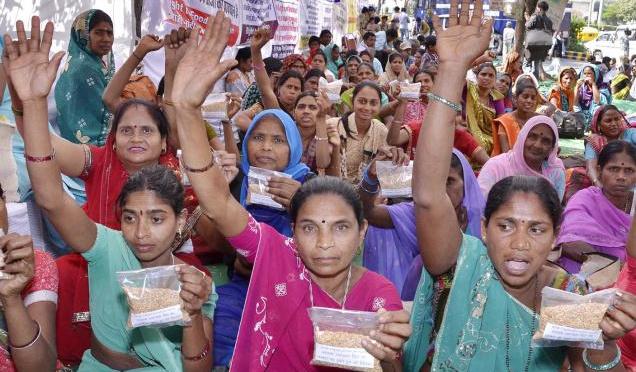Article 25 of the Universal Declaration of Human Rights of 1948 states that:
“Everyone has the right to a standard of living adequate for the health and well-being of himself and his family, including food […]”
States have long accepted that there should be a right to food, at least on paper (many States even consecrate it in their Constitutions). Unfortunately, there at least 870 million people who suffer from chronic hunger around the world, meaning 1 in 8 people… Governments around the world recognize their failure in addressing world hunger. In spite of the 1995 World Food Summit commitment to reduce world hunger by half, from 824 million then to 412 million by 2015, the number of hungry people has in fact increased.
Today we would like to talk to you about an interesting case concerning this “right to food”. It all started in India, in 2001. That year, and for the third consecutive time, the north of India, in particular the state of Rajhastan, was facing an extreme drought. The government had several foodgrain stocks stored, while a part of the people was hungry. At that point, the People’s Union for Civil Liberties, an Indian human rights organism, submitted a writ petition to the Supreme Court, demanding that these stocks be released to feed the people attained by lack of food. Then began a “public interest litigation”, meaning a litigation intended to protect the public interest, as enshrined in article 32 of the Indian Constitution. Thus was created the Right to Food Campaign in India.
Indeed, since the Supreme Court’s responded to that public interest litigation by implementing several different food programs, but not installing a real right to food, several organizations joined to create a true campaign, the Right to Food Campaign. This latter aims at establishing a true right to food. The government has so far established some interesting measures thanks to the Supreme Court like the Mid-day Meals or the Integrated Child Development Services, but so far not a right to food. Nevertheless, this shows that the civil society is really capable of organizing itself to the point of giving new rights to an important part of the population.
More interestingly, there has been the adoption of a National Food Security Bill in 2013. This offers subsided rice to more than 200 million people in India (in particular, rural inhabitants), a figure which is not negligeable. Thanks to this, these people will be able to buy 5 kilos of rice every month at very low prices. Pregnant mothers and those still feeding their babies even have more benefits. More than a right to food, it is a right to food security, which is already a step forward in government politics. Despite everything that could be criticized about these governmental measures (some criticize the fact that the National Food Security Bill is very politicized in view of future elections, while other criticize past measures, like the Mid-day Meals scheme, that has been denounced for intoxicating young children), there is no doubt that this is an historic measure, in a country that has more than 1.2 billion citizens.
The Right to Food Campaign is in itself an historic movement of public mobilization that should be observed from upclose. Read more about it here.
